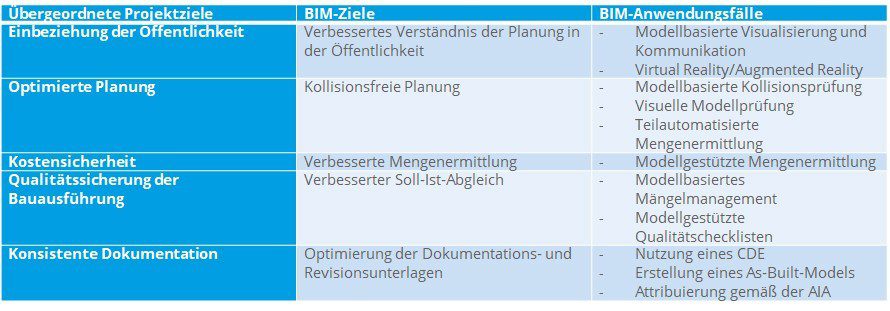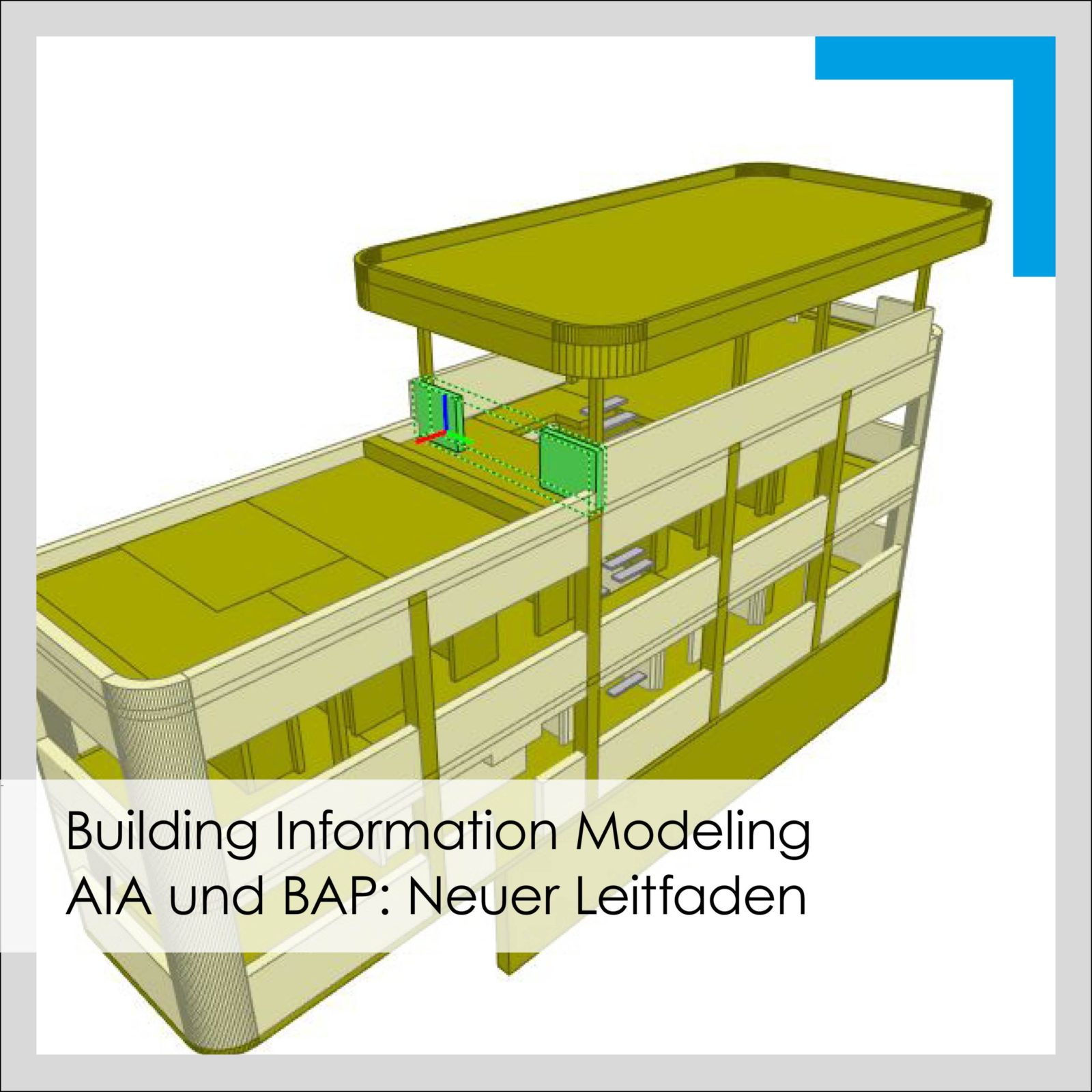VDI 2552, Sheet 10 - Building Information Modelling AIA and BAP
Building Information Modelling (BIM for short) describes a working method for the creation, management and use of information in the area of planning, execution and management of buildings.
The description of technical information requirements is based on increasingly standardised procedures and takes the form of client information requirements (AIA for short).
The BIM execution plan (BAP for short) describes the necessary conventions, processes and rules for the further, collaborative processing of a project.
With regard to AIA and BAP, a guideline for the preparation of the aforementioned documents was issued with the publication of VDI Guideline 2552, Sheet 10 in February 2021. VDI 2552, Sheet 10 is based on Sheet 1:2020-07 Building Information Modelling (Fundamentals) and Sheet 2:2018-06 Building Information Modelling (Terms). Here, Sheet 1 of VDI 2552 describes the principles of the BIM methodology, which should be reflected in AIA and BAP:
- value-adding
- community
- data-centric
- standardised
AIA and BAP are closely related. Thus, in the context of a tender, the contracting authority specifies with the AIA the functional requirements, the quality of the information and data to be supplied and the requirements for project execution. The bidder takes these requirements from the structure of the AIA, which corresponds to the later structure of a BAP. This is often referred to as the pre-contractual BAP. After contract award, the further procedure is agreed and documented in the BAP and, if necessary, updated on an ongoing basis.
Principal Information Requirements (AIA)
The AIA describe the client's requirements for the contractor's information deliveries to achieve the defined BIM objectives and use cases. AIAs also help potential contractors to appropriately calculate and plan for the costs of data and information creation and management when submitting their bids.
AIAs are based on several fundamental principles. These include, for example
- describing the quality of information in terms of scope, level of detail, structure and format; and,
- that AIAs are always project-related and form part of the award and request for tenders.
In the case of several contractors and/or trades, the AIA shall be coordinated and combined into a coherent whole by the Client.
VDI 2552, Sheet 10 describes the contents and structures of the AIA, which have become the most practicable, as follows:
- Introduction with a brief description of the project including the client's objectives and expectations. Here, information on the structure of the tender submission and applicable documents can be named.
- Framework conditions with brief naming of the most important standards and guidelines
- Glossary with project-related, BIM-specific terminology
- This serves to inform all parties involved, names applicable documents and describes the project, the project circumstances and the time frame of the project.
- Definition of the overall project objectives as a basis for the client's requirements and identification of the project-relevant BIM objectives
- Designation of the organisation, roles and suitability criteria to ensure a smooth exchange of data and information. For this purpose, responsibilities are defined and the necessary resources are requested. Any necessary qualifications must also be documented, e.g. in the form of certificates. If necessary, additional training needs must be identified and organised.
- The processes of data and information management are to be implemented on the basis of concrete milestones.
- The technology to be used (hardware and software) must be specified, whereby the fundamental freedom of methods and manufacturer neutrality must be maintained. The implementation of the Common Data Environment (CDE) must be specified. If corresponding licences have to be acquired, this must also be stated in the AIA.
- Data quality and scope requirements shall be described and data security shall be ensured.
VDI 2552, Sheet 10 recommends a project-specific methodology for preparing AIAs in the form of questionnaires and checklists that are subdivided according to service phases. Thus, it is important to record the most important milestones of the service phases of a project at the beginning of the preparation of the AIA and to mark them on a timeline. Over- and underspecification should be avoided, as this can lead to additional financial expenditure or insufficient information accuracy.
The AIA describe what information the client wishes to obtain. The way to achieve this is left to the contractor's discretion in terms of freedom of method, unless there are contractual provisions to the contrary.
BIM execution plan (BAP)
The BAP documents the procedure for the delivery of information and data and for the fulfilment of the contractually agreed AIA jointly developed by the contractor side and agreed with the client after conclusion of the contract.
VDI Guideline 2552, Sheet 10 describes the following structures of a BAP as helpful:
- In the introduction, the specifications and framework conditions of the AIA are to be reviewed and concretised.
- The project-specific initiation and the project objectives of the AIA (cf. points 4 and 5 of the AIA) must also be examined and, if necessary, concretised.
- In the area of responsibilities, contact persons are to be specifically named and a representative function is to be established.
- Process descriptions for data and information management, planning coordination, quality assurance, data security and the definition of BIM use cases are also to be regulated in the BAP.
- In addition, it must be described in detail how the technical implementation of the CDE will be implemented and to what extent software and licences are required.
Overall, the BAP follows the following methodology:
- Picking up the structure of the AIA
- Participation of all relevant project partners
- Use of BAP templates to simplify the creation effort
- Carry out test runs to identify interface problems.
Table 1: Example of the relationship between higher-level project objectives, BIM objectives and their BIM use cases


To the VDI website: https://www.vdi.de/richtlinien/details/vdi-2552-blatt-10-building-information-modeling-auftraggeber-informations-anforderungen-aia-und-bim-abwicklungsplaene-bap
#mullandpartners #engineeringforabettertomorrow #news #workingmethod #BIM #AIA #BAP #VDI
Business areas
Environmental and geotechnical engineering
Construction and project management
Renewable energies
Real estate development
Infrastructure
Water management
Societies
M&P Engineering Company
T&P Beratende Ingenieure
P&P Real Estate Consulting
P&B Real Estate Management
P&M Project Management
M&P Umwelttechnik
Contact

